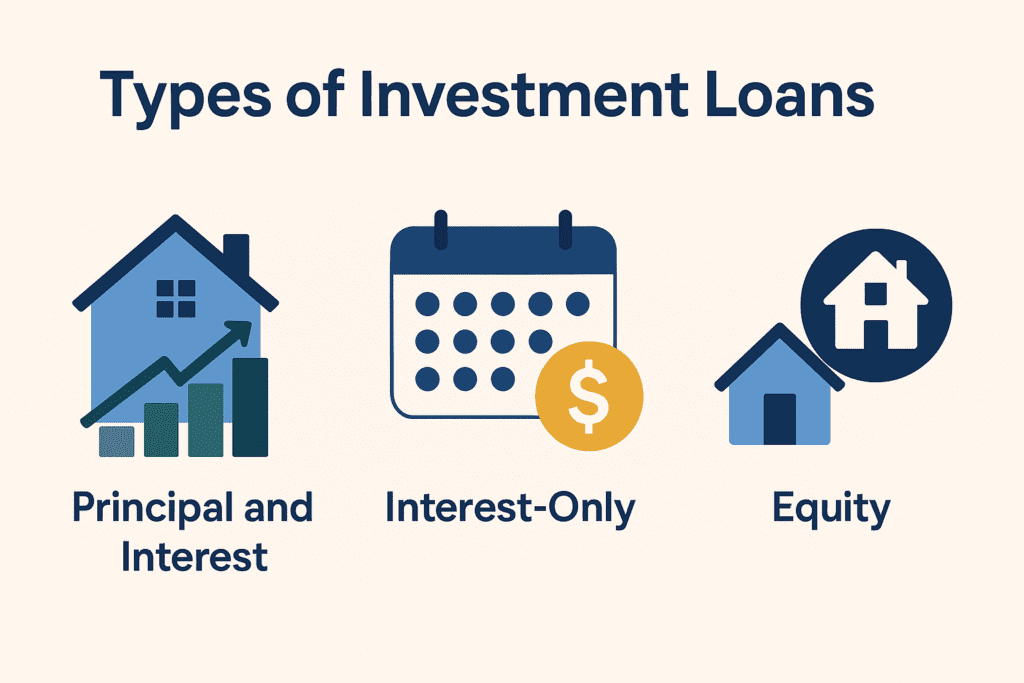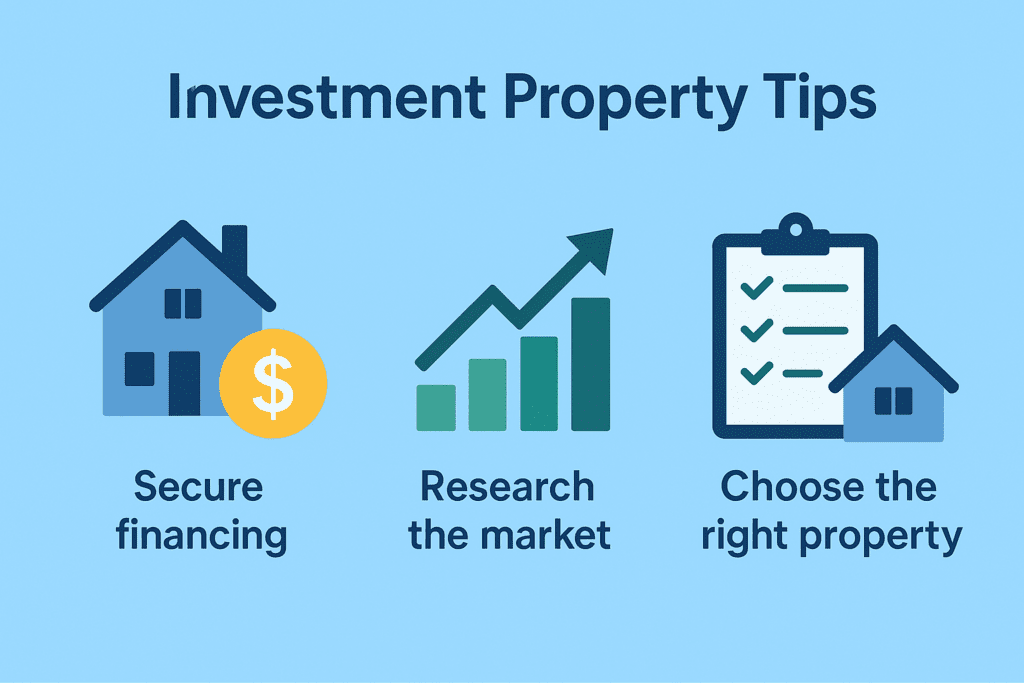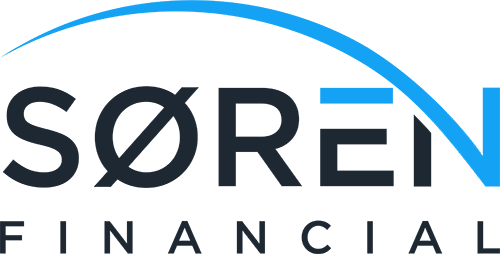Thinking about growing your wealth through property? Investment property loans are designed for buyers looking to generate income or long-term gains from real estate — not just a place to live. Because of this, they work a little differently to standard home loans.
This guide breaks down the loan types, interest structures, tax benefits, and hidden costs so you can make smarter investment decisions.

What Makes an Investment Property Loan Different?
Unlike an owner-occupied loan, lenders assess investment loans with more caution. They look at the property’s earning potential and your ability to handle multiple debts. Expect slightly higher interest rates and tighter approval criteria, but also access to loan structures that could suit your goals better.
Types of Investment Loans in Australia
Principal and Interest (P&I) Loans
These are the traditional types of investment loans to choose from — your repayments gradually cover both the loan amount and the interest. They’re great if you want to steadily build equity while keeping long-term goals in mind.
Why investors choose them:
- Lower rates than interest-only loans
- Equity grows faster, which can fund future purchases
- You pay less interest over the life of the loan
Interest-Only Loans
For a set time (usually 1–5 years depending on the lender and their products), you only pay the interest portion. It frees up cashflow in the short term, which might suit investors aiming for capital growth or juggling multiple properties or investments.
Pros:
- Lower upfront repayments
- Better short-term cash flow
- Larger tax deductions (on interest payments)
Cons:
- Rates are often higher than the standard investment property loans
- Loan balance doesn’t shrink during the interest-only period so you are in effect not paying down the debt
- Reverts to higher P&I payments later once the interest only period expires
Equity Loans
If you’ve already built up equity in an investment property, you may be able to borrow against it to fund your next purchase, renovations or investment.
This Strategy Is Useful When:
- You’re looking to expand your portfolio
- You want to reinvest without selling an asset
- You plan to renovate for better rental returns
Just remember, equity loans increase your overall debt and hence will increase your loan repayments. It will increase your loan to value ratio (LVR) and in addition can increase your interest rate. This can become a risky proposition if property values drop. It is always recommended that you speak to a mortgage broker to discuss your strategy and gain insight on whether you are on the correct path when it comes to your investment property loans.

Interest Rate Options: Fixed, Variable or Split?
Fixed Rate Loans
A fixed rate locks in your interest for a set period in years. It’s a great option for budgeting and peace of mind when markets are unpredictable and you are looking to fix your costs through this period.
Variable Rate Loans
These interest rates fluctuate with the market. You could save if rates fall and equally your repayments will increase if the interest rates increase. Many of these investment property loans offer features like offset accounts and extra repayments so you can pay the debt down faster. You can work our the amount of interest VS principal you are paying via our effective interest rate calculator here.
Split Loans
Split loans combine fixed and variable portions — ideal if you want certainty on one side and flexibility on the other. This way you are hedging your bets on the market moving either way and you are happy to be partially right. You can also choose your split to suit, just remember that the fixed element of your loan generally does not allow for extra repayments so you want to make sure that you don’t fix a larger part of your loan if you are planning to make larger extra repayments over this period.
Key Factors When Comparing Loans
Interest Rate vs Comparison Rate
Look beyond the headline rate — the comparison rate includes most fees and gives a better idea of the true cost of the investment property loans you are looking at and comparing.
Loan Features
Top features to keep an eye out for:
- Offset accounts to reduce interest
- Extra repayments to pay the loan down faster
- Redraw facilities so you can access surplus repayments if needed
Hidden Costs and Fees to Budget For
Upfront
- Deposit: Usually 10–20% for investors
- LMI (Lenders Mortgage Insurance) if you borrow over 80%
- Establishment, application, and valuation fees
Ongoing
- Higher interest repayments (usually 0.2–0.5% above owner-occupier loans)
- Annual package fees tied to features like offsets
Final Tips for Property Investors
Make sure the numbers stack up. Look at both the cash flow (rental income vs loan costs) and the tax implications. And most importantly, get tailored advice — speaking to a mortgage broker who understands investment property loans can make a huge difference. Contact us now at startnow@sorenfinancial.com.
